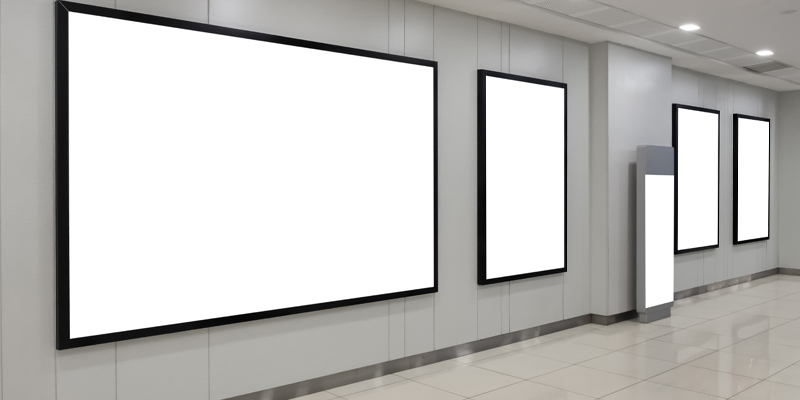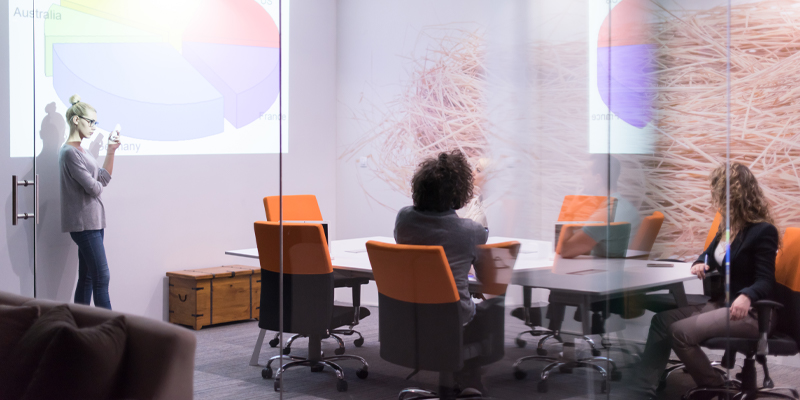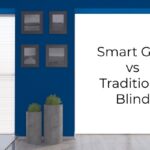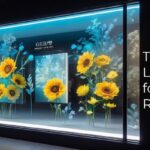As technology continues to evolve, projection screens have become increasingly important for various applications such as home theater, business presentations, and digital signage. Rear projection glass screens have been gaining popularity due to their superior image quality and versatility in different lighting environments. Rear projection glass screens, in particular, have become a popular choice for many applications due to their durability, flexibility, and excellent optical properties. In this article, we will explore the different types of rear projection glass screens and their uses.
Introduction to Rear Projection Glass Screens
These projection screens are made of high-quality optical glass that is coated with a special reflective material. This reflective coating is designed to reflect light from a projector back to the audience. It produces a clear and bright image. Unlike traditional front projection screens, rear projection glass screens can produce high-quality images. They can do so even in brightly lit environments and don’t require a dark environment for optimal viewing.
Types of Rear Projection Glass Screens

There are several types available on the market, each with unique features and benefits. Here are some of the most common types:
Clear Rear Projection Glass Screens
Clear projection screens are made of high-quality optical glass that is transparent and colorless. These screens offer excellent image quality and are ideal for applications that require a minimalist design. These projection screens are also suitable for outdoor applications due to their excellent weather resistance.
Ultra Short-Throw Rear Projection Screens
Ultra short-throw rear projection Glass screens are designed to be used with ultra-short throw projectors, which can project images from a very short distance. These screens are made of high-quality optical glass that is coated with a special reflective material, which allows them to produce bright and clear images even in brightly lit environments.
Interactive Rear Projection Screens
Interactive rear projection Glass screens are designed to be used with interactive projectors, which allow users to interact with the projected image using their hands or other objects. These screens are made of high-quality optical glass that is coated with a special reflective material and a touch-sensitive layer, which allows them to detect touch and other interactions.
Holographic Rear Projection Screens
The manufacturers design holographic rear projection Glass screens to produce holographic images that seem to float in mid-air. They make these screens of high-quality optical glass coated with a special reflective material and a holographic layer that creates the holographic effect.
Application of Rear Projection Glass Screens

rear projection Glass screens are used in a wide range of applications, including:
Home Theater
These projection screens are an excellent choice for home theater applications, providing a cinematic experience that can rival commercial theaters. These screens are ideal for rooms with ambient light and can produce bright and clear images even in well-lit environments.
Business Presentations
Businesses commonly use these projection screens for presentations and meetings because they provide a large, bright, and clear image. Conference rooms, boardrooms, and other environments that require a large and clear image find these screens ideal.
Digital Signage
In digital signage applications, people typically use these projection screens. These screens provide a large and bright image for advertising and other promotional purposes. They are ideal for storefronts, malls, and other public spaces where a large and clear image is required.
Entertainment and Theme Parks
Entertainment and theme park applications commonly use these projection screens, which provide immersive experiences that can include interactive and holographic effects. These screens are ideal for attractions, rides, and other entertainment applications.
Conclusion
We have covered a detailed guide on Different Types of Rear Projection Glass Screens and Their Uses. Rear projection Glass screens offer superior image quality, durability, and versatility, making them an excellent choice for a wide range of applications. Whether you’re looking to create a home theater, host business presentations, or enhance your digital signage, there is a Rear projection Glass screen that can meet your needs. With clear, ultra-short-throw, interactive, and holographic options available, you can choose the perfect screen for your application.
Overall, rear projection Glass screens offer many advantages over traditional front projection screens, including better image quality, versatility, and durability. They are an excellent choice for anyone looking to create a high-quality visual experience in any environment.
FAQs
Transparent and colorless clear projection screens do not obstruct the view, whereas ultra short-throw rear projection screens are compatible with ultra-short throw projectors, which can project images from a very short distance.
No, they are simple to install and operate. They usually include software to adjust the touch sensitivity for the best results.
No, holographic rear projection screens are not suitable for outdoor use as they require specific lighting conditions to produce the holographic effect.
These projection screens offer superior image quality, better contrast, and wider viewing angles compared to LED displays. They are also more flexible in terms of size and shape.
Screen size varies depending on the type and manufacturer. Some can be several meters in size, while others are for smaller uses.
You can use Some projection screens outdoors, but they are usually more expensive and need special installation and maintenance. Manufacturers do not intend most screens for outdoor use.
Yes, like any other screen, these projection screens require regular cleaning to maintain optimal image quality. You can use a soft, lint-free cloth and a mild cleaning solution to clean the screen.
These are not typically designed for outdoor use; some weather-resistant models can be used for outdoor events. These screens are usually more expensive and require specialized installation and maintenance.





